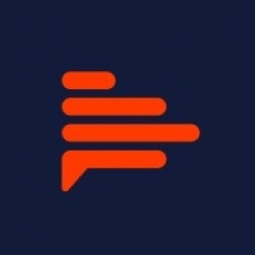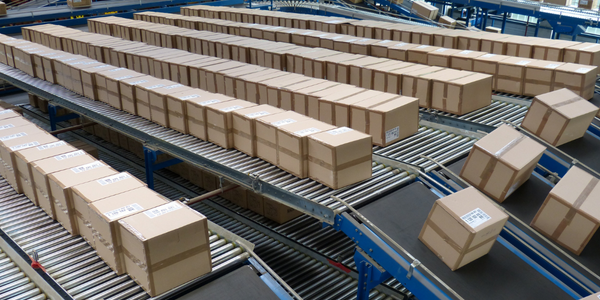Bluegreen Vacations: Insights from Interaction Analytics Lead to Happier Agents and Boost Customer Satisfaction

Customer Company Size
Large Corporate
Region
- America
Country
- United States
Product
- CallMiner Eureka Interaction Analytics
- CallMiner myEureka Feedback Portal
Tech Stack
- Interaction Analytics
- Automated Performance Portal
Implementation Scale
- Enterprise-wide Deployment
Impact Metrics
- Customer Satisfaction
- Employee Satisfaction
- Productivity Improvements
Technology Category
- Analytics & Modeling - Real Time Analytics
Applicable Functions
- Sales & Marketing
- Human Resources
Use Cases
- Predictive Quality Analytics
- Personnel Tracking & Monitoring
Services
- Data Science Services
About The Customer
Bluegreen Vacations is a timeshare and vacation club management company headquartered in Boca Raton, FL. In 2013 it was honored as an innovator after its award-winning CallMiner Eureka interaction analytics rollout helped produce a 26 percent improvement in customer satisfaction scores, a 19 percent increase in agent quality scores and a 48 percent increase in collections, which all contributed to turning its contact center operations from a cost center to a profit center. Implementing interaction analytics produced full return-on-investment (ROI) in the first year. The company wanted to give the managers and quality assurance (QA) staff at its 175-seat call center in Indianapolis insight that could improve hiring, training and coaching to reduce turnover.
The Challenge
Bluegreen Vacations, a timeshare and vacation club management company, was facing a high agent attrition rate in its 175-seat call center in Indianapolis. The churn was particularly high in the first month as new employees often discovered that the life of a call center agent wasn’t what they thought it would be. The churn rate settled after the first month, but then approximately doubled starting in month five. Bluegreen was convinced that its CCR attrition reduced morale, increased the cost of running the contact center and ultimately had a significant impact on customer experience results. The company wanted to give the managers and quality assurance (QA) staff insight that could improve hiring, training and coaching to reduce turnover.
The Solution
Bluegreen decided to use CallMiner Eureka Interaction Analytics and CallMiner myEureka Feedback Portal to monitor contact center representatives on several key performance indicators (KPIs), which include: Agent Quality Index downtrends, Survey scores (free form comments), Attendance patterns, Attitude, Tone, listening skills, agent ownership. Results are compiled into scorecards that reflect performance at the agent and group levels. The scoring enables contact center operators to instantly identify potential problems or trends. Eureka reporting features make it easy to track agent performance over time. Bluegreen also uses the Ranking Data output from the CallMiner myEureka portal to encourage agents to perform and compete beyond making their minimum targets. Access to rank data for each metric and key performance drivers motivates a competitive culture for high performance, which Bluegreen uses in multiple ways.
Operational Impact
Quantitative Benefit

Case Study missing?
Start adding your own!
Register with your work email and create a new case study profile for your business.
Related Case Studies.

Case Study
Goldcorp: Internet of Things Enables the Mine of the Future
Goldcorp is committed to responsible mining practices and maintaining maximum safety for its workers. At the same time, the firm is constantly exploring ways to improve the efficiency of its operations, extend the life of its assets, and control costs. Goldcorp needed technology that can maximize production efficiency by tracking all mining operations, keep employees safe with remote operations and monitoring of hazardous work areas and control production costs through better asset and site management.

Case Study
IoT Data Analytics Case Study - Packaging Films Manufacturer
The company manufactures packaging films on made to order or configure to order basis. Every order has a different set of requirements from the product characteristics perspective and hence requires machine’s settings to be adjusted accordingly. If the film quality does not meet the required standards, the degraded quality impacts customer delivery causes customer dissatisfaction and results in lower margins. The biggest challenge was to identify the real root cause and devise a remedy for that.

Case Study
Cisco Kinetic for Oil and Gas: Refineries and Plants
The plant manager and safety teams needed a solution that provided near real-time visibility of gas detection and personnel location, with easy to understand visualization and alerting dashboards. This would enable them to improve productivity through decreasing the time taken to start work, optimize evacuation route planning, and to meet critical staff safety and compliance goals.

Case Study
Industry 4.0 at ALPLA: Enhancing Factory Efficiency with IoT
ALPLA, a global leader in packaging solutions, faced several challenges as the complexity of their production machinery increased. The need for highly trained specialists in each factory led to higher personnel costs, difficulties in recruiting experienced talent at each location, and costly personnel turnover. Furthermore, less experienced operators running the machines sub-optimally impacted resource consumption and overall equipment effectiveness (OEE). ALPLA also faced the challenge of monitoring visual inspection systems in every line of their plants, which was almost impossible to do manually. In 2016, ALPLA decided to use data from the 900 different types of embedded sensors in each factory to address these issues. However, their initial choice of SQL Server as the data store for the sensor data proved inadequate, as it was unable to cope with their data requirements.

Case Study
Digital Transformation of Atlanta Grout & Tile: An IoT Case Study
Atlanta Grout & Tile, a Tile, Stone & Grout restoration company based in Woodstock, Georgia, was facing challenges with its traditional business model. Despite steady growth over the years, the company was falling behind the web revolution and missing out on the opportunity to tap into a new consumer base. They were using independent software from different vendors for each of their department information and workforce management. This resulted in a lot of manual work on excel and the need to export/import data between different systems. This not only increased overhead costs but also slowed down their response to clients. The company also had to prepare numerous reports manually and lacked access to customer trends for effective business decision-making.

Case Study
Automated Headcounts Brings Security for Ferrero
Accounting for more than 1200 personnel, as well as visitors, at any given time is an arduous task, and even harder in the chaotic environment of an emergency. Every second counts when it comes to the safe evacuation of individuals in such events.Ferrero needed a way to confirm that all its employees could be safely accounted when an emergency evacuation was underway. The manual method had gotten out of date -- tracking each individual through manual counting was time-consuming and introduced potential for errors. Even if all personnel appeared at the dedicated mustering points, the employee roster for any given day could not be accurately obtained, especially when visitors were also in the building.Ferrero takes safety for these employees seriously and was recently seeing a solution that leveraged the latest that technology has to offer. The company’s internal audit system requires employee headcounts fast. After all, seconds can be critical when an emergency takes place and people need to be accounted for.






